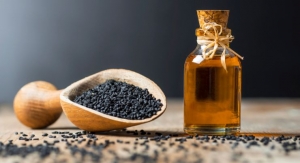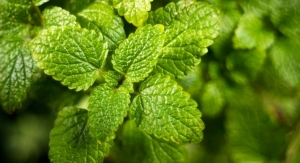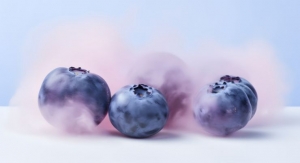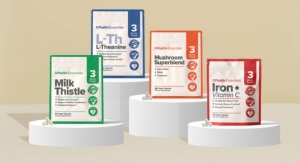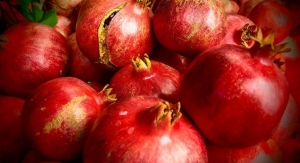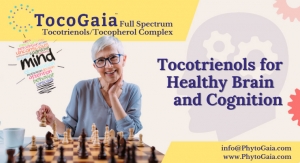Dilip Ghosh, PhD, FACN, nutriConnect03.02.15
An antioxidant is a synthetic or natural compound capable of slowing or preventing the oxidation of other molecules. Most commercial food antioxidants work by scavenging free radicals or chelating metals. It is well-known that oxidation damages various biological substances and subsequently causes many health problems, such as cancer, liver disease, Alzheimer’s disease, aging, arthritis, inflammation, diabetes, Parkinson’s disease, atherosclerosis and AIDS. As a result, many antioxidant compounds have been used to prevent oxidative damage.
“You name it, if it’s an antioxidant, we’ll swallow it by the bucket-load.” This was the overwhelming attitude among consumers toward antioxidant-rich foods and beverages even a few years back (New Scientist, 2006). The traditional “trio” of antioxidants (ascorbate, beta-carotene and alpha-tocopherol) has received bad press recently, however. Several recent human intervention trials have demonstrated mostly negative results, and some meta-analyses and other studies suggested some of these agents not only fail to protect against disease, but may also accelerate development of cancer or cardiovascular diseases. This prospect obviously raised concern about the century-old perceived health benefits of antioxidants.
Antioxidant Market
The global market for antioxidants is growing at a considerable rate (at a CAGR of 4.71% over the period of 2013-2018) with rapid growth in the Asia-Pacific and North America markets (TechNavio, 2014). Europe represents the largest regional market for antioxidants with strong growth in the U.K. and Ireland. The global market for antioxidants is segmented into two major types: natural and synthetic. Based on functions, antioxidants are segmented into functional food ingredients and products used for preservation.
Combining top antioxidant ingredient sales such as green tea, dark chocolate, superfruit juice and dietary supplements, Euromonitor estimated the combined global sales in these categories totaled $34 billion in 2010. According to Euromonitor, the top antioxidant markets are Japan, the U.S. and China, with sales growing steadily in all five ranked product areas in the past five years. Growth from 2005 to 2010 was 43% in current terms. As a point of comparison, the global organic packaged food and beverage market was only $27 billion.
The Antioxidant Controversy
Antioxidant research and outcomes have generated more controversial opinions than any other scientific subjects. The topic is being discussed not only in the scientific literature but also in the mainstream media. A Google search combining the words “antioxidant” and “health” yields more than 82 million hits, exemplifying the popularity of the subject. These controversies inevitably hamper research in the field and confuse both scientists and consumers, generating a wide range of misconceptions. Bast & Haenen (TIPS, 2013) documented these misconceptions nicely:
Perception & Marketing
Product differentiation is the centerpiece of a successful campaign to win over bet-ter-educated, cost-conscious consumers in today’s crowded market. Baby Boomers are mostly affluent and well educated and are willing to spend on health maintenance and improvement through nutrient enhanced foods and dietary supplements. At the same time, younger people and those trying to sustain a healthy, energetic lifestyle are also a target for this antioxidant campaign. According to some estimates, around half of U.S. adults take antioxidant supplements daily.
To attract consumers, use of the word “antioxidant” on the label of food products is increasing, and numerous assay methods have been developed to measure this antioxidant potentiality. For example, food manufacturers are beginning to use values from assays like ORAC (oxygen radical absorbance capacity) and DPPH (2, 2’-diphenyl-l-picrylhydrazyl) to emphasize the antioxidant profile of their products.
However, according to new research from the Department of Food Science at the University of Massachusetts, basing antioxidant activity claims on results of basic antioxidant assays such as ORAC and DPPH could be misleading. The results from the free radical scavenging assays are not consistent, even confusing at times. Accordingly, data from these assays should not be used to imply that compounds with high free radical scavenging capacities are good antioxidants in food systems. According to study findings, the ORAC results showed that, of the tested compounds, ferulic acid performed the best, followed by coumaric acid, propyl gallate, gallic acid and vitamin C (ascorbic acid). On the other hand, the DPPH for non-polar compounds showed that rosmarinic acid came out on top, with higher values than butylated hydroxytoluene, tert-butylhydroquinone and vitamin E.
Behind the Theory
The antioxidant hypothesis implies that all changes associated with reactive species activity are undesirable and the action of antioxidants beneficial. It is particularly significant that some dietary compounds have beneficial activities, which are not direct antioxidant effects (e.g., glucosinolates) while others (e.g., vitamins C and E, and the carotenoids), previously recognized only for their classical antioxidant characteristics, are also being shown to induce other biological responses. In recent years, several experiments demonstrated that all reactive species act as signaling molecules in cell function, proliferation and differentiation, and cell death, altering the over simplistic “antioxidant theory.” Unfortunately, the majority of data available to support this theory have been obtained from cell culture and animal experiments and the relevance of these data, obtained under non-physiological conditions, needs to be reassessed.
Ultimately, antioxidants can’t be pinned to one mechanism of action (i.e., scavenging of radicals), but will be based on inflammation, immunity and oxidative stress. Future health claims could focus more on this “trio,” which better reflects biological activity and is more relevant to human disease prevention.
Going Natural
A significant number of studies have shown that fruits and vegetables promote health, while antioxidant supplements do not. Recent evidence for health benefits strongly supports the food synergy pattern rather than for individual foods or food constituents. Several reviews suggest that although dietary supplements may be beneficial in states of insufficiency, the safe middle ground for consumption is likely food.
The food synergy concept supports the idea of a variety of dietary habits and of selecting nutrient-rich foods. Also, food must survive gastrointestinal digestion and be bioavailable at biologically active forms to deliver health benefits. The American Heart Association (AHA) doesn’t approve of taking antioxidant vitamin supplements to improve health, believing natural antioxidant foods are better. The AHA argues there is no evidence that antioxidant supplements provide cardiovascular protection.
On the other hand, intense marketing campaigns argue that antioxidant supplements are beneficial for health. A supplement can help you obtain a proper antioxidant intake even if you don’t get it with food. Ultimately, it makes sense to include as much antioxidant foods in the diet as possible. Most fruits are not only a rich antioxidant source, but are also high in fiber and low in fat.
Regulatory Guidance
In June 2008 the U.S. FDA published guidance to help small companies comply with the labeling of antioxidant products and high potency products. The guidance confirmed that describing the level of antioxidant nutrients present in a food is a nutrient content claim, and may be used on food labels in conjunction with food regulations (21 CFR 101.54(g)).
However, antioxidant nutrient content claims can only be made if the nutrients have an established Reference Daily Intakes (RDI), as well as scientifically recognized antioxidant activity. In order to use a “high in antioxidants” claim, the food would have to contain 20% or more of the Daily Reference Value (DRV) or RDI per serving. For a “good source” claim, the food would have to contain between 10-19% of the DRV or RDI per serving. In other countries, such as Australia, Canada and the EU, there is no antioxidant-specific regulation. Most of the claims in relation to antioxidants are centered on nutrient content or nutrient profiling.
Commentary
Today’s consumers are not satisfied with a generic antioxidant benefit unless activity offers proven health benefits through clinical trials. For example, in 2009 Danone removed its Essensis, an “inside/out” beauty product that contained borage oil, vitamin E and green tea-derived antioxidants from the French market. One of the many reasons for its failure was a lack of clinical research on green tea’s benefits for skin care.
Most marketers have simply touted that antioxidants help protect the body against oxidative damage caused by free radicals. However, intense debate continues to surround what constitutes a valid measurement of antioxidant activity. In the past, ORAC value was the most frequently cited scientific backing for an antioxidant product. In reality, ORAC is only one piece of the whole antioxidant puzzle and there are new, biologically relevant assays that can justify antioxidant measurement from a scientific point of view.
ORAC is physiologically meaningless; it is strictly a test tube phenomenon. Since biochemical systems, in relation to oxidative status, work at a variety of levels or strata, ORAC won’t pick up all those levels. Moreover, water-soluble and lipid-soluble antioxidants are adding more complexity to this puzzle. Overall, experts predicted it could take more than a decade before human clinical trials confirm antioxidants as physiological nutrients with specific effects on organ tissue, which will substantiate health claims. Meanwhile, experts suggest “consumers will continue to crave these compounds, in a variety of forms and applications. Supplying such demand will be in the hands of the innovators who can grow the category, in spite of the obstacles that exist today.” (Murphy, 2014, Free Radical Biology and Medicine.)
Take-Away Message
It might be helpful “to stop thinking of antioxidant therapy as a branch of nutrition and instead view it as a drug discovery and development program.” (Murphy, 2014.) It’s scientifically realistic to look beyond the traditional “antioxidant box” and possible “to design a molecule with the appropriate chemistry to selectively decrease the concentration of a defined damaging reactive species at a specific stage of the pathology within the appropriate organ/cell/subcellular location, sufficiently to bring about a clinically significant improvement.”
Dilip Ghosh, PhD, FACN
nutriConnect
Dilip Ghosh, PhD, FACN, is director of nutriConnect, based in Sydney, Australia. He is also professionally involved with Soho Flordis International, the University of Western Sydney, Australia, and is an Honorary Ambassador with the Global Harmonization Initiative (GHI). Dr. Ghosh received his PhD in biomedical science from University of Calcutta, India. He has been involved in drug-development (both synthetic and natural) and functional food research and development both in academic and industry domains. Dr. Ghosh has published more than 60 papers in peer-reviewed journals, and he has authored two recent books, “Biotechnology in Functional Foods and Nutraceuticals,” and “Innovation in Healthy and Functional Foods,” under CRC Press. His next book, “Clinical Perspective of Functional Foods and Nutraceuticals” is in press. He can be reached at dilipghosh@nutriconnect.com.au; www.nutriconnect.com.au.
“You name it, if it’s an antioxidant, we’ll swallow it by the bucket-load.” This was the overwhelming attitude among consumers toward antioxidant-rich foods and beverages even a few years back (New Scientist, 2006). The traditional “trio” of antioxidants (ascorbate, beta-carotene and alpha-tocopherol) has received bad press recently, however. Several recent human intervention trials have demonstrated mostly negative results, and some meta-analyses and other studies suggested some of these agents not only fail to protect against disease, but may also accelerate development of cancer or cardiovascular diseases. This prospect obviously raised concern about the century-old perceived health benefits of antioxidants.
Antioxidant Market
The global market for antioxidants is growing at a considerable rate (at a CAGR of 4.71% over the period of 2013-2018) with rapid growth in the Asia-Pacific and North America markets (TechNavio, 2014). Europe represents the largest regional market for antioxidants with strong growth in the U.K. and Ireland. The global market for antioxidants is segmented into two major types: natural and synthetic. Based on functions, antioxidants are segmented into functional food ingredients and products used for preservation.
Combining top antioxidant ingredient sales such as green tea, dark chocolate, superfruit juice and dietary supplements, Euromonitor estimated the combined global sales in these categories totaled $34 billion in 2010. According to Euromonitor, the top antioxidant markets are Japan, the U.S. and China, with sales growing steadily in all five ranked product areas in the past five years. Growth from 2005 to 2010 was 43% in current terms. As a point of comparison, the global organic packaged food and beverage market was only $27 billion.
The Antioxidant Controversy
Antioxidant research and outcomes have generated more controversial opinions than any other scientific subjects. The topic is being discussed not only in the scientific literature but also in the mainstream media. A Google search combining the words “antioxidant” and “health” yields more than 82 million hits, exemplifying the popularity of the subject. These controversies inevitably hamper research in the field and confuse both scientists and consumers, generating a wide range of misconceptions. Bast & Haenen (TIPS, 2013) documented these misconceptions nicely:
- Antioxidants cure any disease
- Antioxidants increase mortality
- The more the better
- At high doses, antioxidants become pro-oxidant
- Any antioxidant will do
- Theoretically, antioxidants cannot behave as such
- Antioxidant status measures health
- Once used, antioxidants are inactive
- Natural antioxidants are superior
- Antioxidant drugs do not work
Perception & Marketing
Product differentiation is the centerpiece of a successful campaign to win over bet-ter-educated, cost-conscious consumers in today’s crowded market. Baby Boomers are mostly affluent and well educated and are willing to spend on health maintenance and improvement through nutrient enhanced foods and dietary supplements. At the same time, younger people and those trying to sustain a healthy, energetic lifestyle are also a target for this antioxidant campaign. According to some estimates, around half of U.S. adults take antioxidant supplements daily.
To attract consumers, use of the word “antioxidant” on the label of food products is increasing, and numerous assay methods have been developed to measure this antioxidant potentiality. For example, food manufacturers are beginning to use values from assays like ORAC (oxygen radical absorbance capacity) and DPPH (2, 2’-diphenyl-l-picrylhydrazyl) to emphasize the antioxidant profile of their products.
However, according to new research from the Department of Food Science at the University of Massachusetts, basing antioxidant activity claims on results of basic antioxidant assays such as ORAC and DPPH could be misleading. The results from the free radical scavenging assays are not consistent, even confusing at times. Accordingly, data from these assays should not be used to imply that compounds with high free radical scavenging capacities are good antioxidants in food systems. According to study findings, the ORAC results showed that, of the tested compounds, ferulic acid performed the best, followed by coumaric acid, propyl gallate, gallic acid and vitamin C (ascorbic acid). On the other hand, the DPPH for non-polar compounds showed that rosmarinic acid came out on top, with higher values than butylated hydroxytoluene, tert-butylhydroquinone and vitamin E.
Behind the Theory
The antioxidant hypothesis implies that all changes associated with reactive species activity are undesirable and the action of antioxidants beneficial. It is particularly significant that some dietary compounds have beneficial activities, which are not direct antioxidant effects (e.g., glucosinolates) while others (e.g., vitamins C and E, and the carotenoids), previously recognized only for their classical antioxidant characteristics, are also being shown to induce other biological responses. In recent years, several experiments demonstrated that all reactive species act as signaling molecules in cell function, proliferation and differentiation, and cell death, altering the over simplistic “antioxidant theory.” Unfortunately, the majority of data available to support this theory have been obtained from cell culture and animal experiments and the relevance of these data, obtained under non-physiological conditions, needs to be reassessed.
Ultimately, antioxidants can’t be pinned to one mechanism of action (i.e., scavenging of radicals), but will be based on inflammation, immunity and oxidative stress. Future health claims could focus more on this “trio,” which better reflects biological activity and is more relevant to human disease prevention.
Going Natural
A significant number of studies have shown that fruits and vegetables promote health, while antioxidant supplements do not. Recent evidence for health benefits strongly supports the food synergy pattern rather than for individual foods or food constituents. Several reviews suggest that although dietary supplements may be beneficial in states of insufficiency, the safe middle ground for consumption is likely food.
The food synergy concept supports the idea of a variety of dietary habits and of selecting nutrient-rich foods. Also, food must survive gastrointestinal digestion and be bioavailable at biologically active forms to deliver health benefits. The American Heart Association (AHA) doesn’t approve of taking antioxidant vitamin supplements to improve health, believing natural antioxidant foods are better. The AHA argues there is no evidence that antioxidant supplements provide cardiovascular protection.
On the other hand, intense marketing campaigns argue that antioxidant supplements are beneficial for health. A supplement can help you obtain a proper antioxidant intake even if you don’t get it with food. Ultimately, it makes sense to include as much antioxidant foods in the diet as possible. Most fruits are not only a rich antioxidant source, but are also high in fiber and low in fat.
Regulatory Guidance
In June 2008 the U.S. FDA published guidance to help small companies comply with the labeling of antioxidant products and high potency products. The guidance confirmed that describing the level of antioxidant nutrients present in a food is a nutrient content claim, and may be used on food labels in conjunction with food regulations (21 CFR 101.54(g)).
However, antioxidant nutrient content claims can only be made if the nutrients have an established Reference Daily Intakes (RDI), as well as scientifically recognized antioxidant activity. In order to use a “high in antioxidants” claim, the food would have to contain 20% or more of the Daily Reference Value (DRV) or RDI per serving. For a “good source” claim, the food would have to contain between 10-19% of the DRV or RDI per serving. In other countries, such as Australia, Canada and the EU, there is no antioxidant-specific regulation. Most of the claims in relation to antioxidants are centered on nutrient content or nutrient profiling.
Commentary
Today’s consumers are not satisfied with a generic antioxidant benefit unless activity offers proven health benefits through clinical trials. For example, in 2009 Danone removed its Essensis, an “inside/out” beauty product that contained borage oil, vitamin E and green tea-derived antioxidants from the French market. One of the many reasons for its failure was a lack of clinical research on green tea’s benefits for skin care.
Most marketers have simply touted that antioxidants help protect the body against oxidative damage caused by free radicals. However, intense debate continues to surround what constitutes a valid measurement of antioxidant activity. In the past, ORAC value was the most frequently cited scientific backing for an antioxidant product. In reality, ORAC is only one piece of the whole antioxidant puzzle and there are new, biologically relevant assays that can justify antioxidant measurement from a scientific point of view.
ORAC is physiologically meaningless; it is strictly a test tube phenomenon. Since biochemical systems, in relation to oxidative status, work at a variety of levels or strata, ORAC won’t pick up all those levels. Moreover, water-soluble and lipid-soluble antioxidants are adding more complexity to this puzzle. Overall, experts predicted it could take more than a decade before human clinical trials confirm antioxidants as physiological nutrients with specific effects on organ tissue, which will substantiate health claims. Meanwhile, experts suggest “consumers will continue to crave these compounds, in a variety of forms and applications. Supplying such demand will be in the hands of the innovators who can grow the category, in spite of the obstacles that exist today.” (Murphy, 2014, Free Radical Biology and Medicine.)
Take-Away Message
It might be helpful “to stop thinking of antioxidant therapy as a branch of nutrition and instead view it as a drug discovery and development program.” (Murphy, 2014.) It’s scientifically realistic to look beyond the traditional “antioxidant box” and possible “to design a molecule with the appropriate chemistry to selectively decrease the concentration of a defined damaging reactive species at a specific stage of the pathology within the appropriate organ/cell/subcellular location, sufficiently to bring about a clinically significant improvement.”
Dilip Ghosh, PhD, FACN
nutriConnect
Dilip Ghosh, PhD, FACN, is director of nutriConnect, based in Sydney, Australia. He is also professionally involved with Soho Flordis International, the University of Western Sydney, Australia, and is an Honorary Ambassador with the Global Harmonization Initiative (GHI). Dr. Ghosh received his PhD in biomedical science from University of Calcutta, India. He has been involved in drug-development (both synthetic and natural) and functional food research and development both in academic and industry domains. Dr. Ghosh has published more than 60 papers in peer-reviewed journals, and he has authored two recent books, “Biotechnology in Functional Foods and Nutraceuticals,” and “Innovation in Healthy and Functional Foods,” under CRC Press. His next book, “Clinical Perspective of Functional Foods and Nutraceuticals” is in press. He can be reached at dilipghosh@nutriconnect.com.au; www.nutriconnect.com.au.


